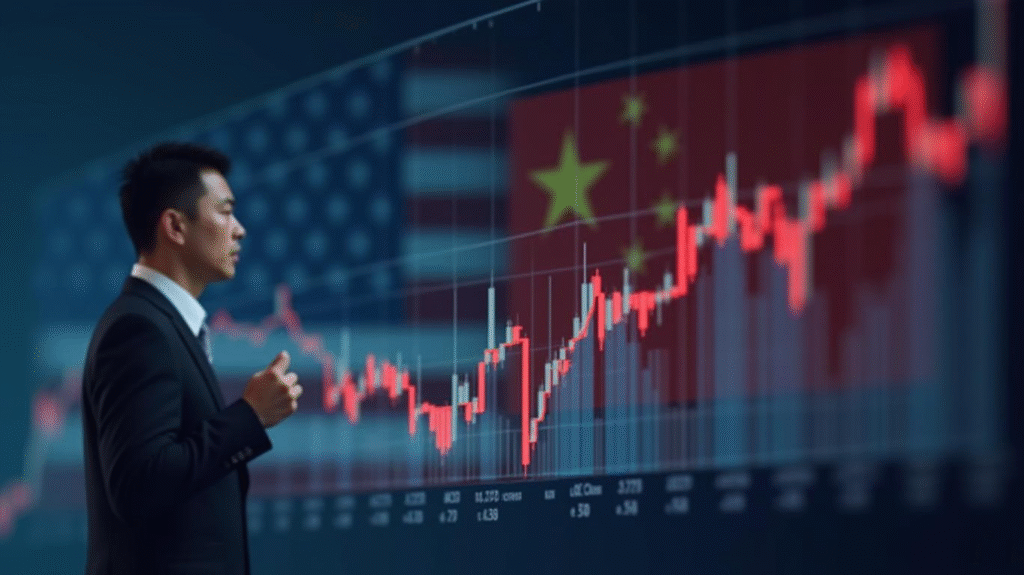In a move that signals a profound shift in the global semiconductor industry, Nvidia has confirmed it will no longer include China in its forward-looking revenue forecasts. The decision comes amid growing U.S.-China tensions, continued export restrictions from the U.S. government, and mounting uncertainty about Nvidia’s ability to conduct business in the world’s second-largest economy.
Nvidia’s strategic pivot not only reflects a changing political landscape but also underscores the increasingly fragile nature of global tech supply chains. The GPU giant, whose chips power everything from gaming to artificial intelligence (AI) and supercomputing, now finds itself at the center of an escalating technological cold war between Washington and Beijing.
This press release explores the full scope of Nvidia’s announcement — from its historical reliance on China, to the motivations behind the decision, and the ripple effects that may impact the broader tech ecosystem.
A Strategic Pivot: Nvidia Drops China from Guidance
During its most recent earnings call, Nvidia disclosed that it would no longer be factoring China into its forward-looking revenue projections. The announcement came from CFO Colette Kress, who clarified that due to ongoing export license uncertainties and geopolitical instability, the company could not reliably forecast future sales to China.
This is a notable shift for Nvidia, which has historically earned a significant portion of its data center and AI chip revenue from Chinese firms. Although the company will continue servicing existing clients in China under current regulatory frameworks, it is clearly realigning its financial outlook to reflect a decoupling trend that’s been brewing for years.
A Brief Look at Nvidia’s History in China
Nvidia has long maintained a strong presence in China, especially in the realms of gaming GPUs, AI accelerators, and high-performance computing (HPC). Prior to U.S. government restrictions, Nvidia chips such as the A100 and H100 were widely used by Chinese tech giants like Alibaba, Tencent, and Baidu.
In fact, according to industry estimates, China accounted for over 20% of Nvidia’s data center revenue in 2022 — a significant figure considering the company’s global footprint. Chinese cloud service providers were aggressively adopting Nvidia’s chips to power AI services, from facial recognition and autonomous vehicles to search engines and e-commerce algorithms.
That reliance, however, began to erode with the introduction of U.S. export controls in late 2022.
U.S. Export Restrictions: The Crux of the Crisis
The heart of Nvidia’s China dilemma lies in U.S. government policy. In October 2022, the U.S. Department of Commerce issued sweeping export controls aimed at limiting China’s access to advanced semiconductor technologies. The restrictions specifically targeted high-end AI chips — including Nvidia’s A100 and H100 — preventing the company from selling its most advanced processors to Chinese firms.
Nvidia responded by developing lower-performance alternatives like the A800 and H800, designed to comply with the regulatory thresholds. However, even these watered-down chips came under scrutiny in 2023 and 2024, as U.S. officials tightened the rules further.
The Biden administration’s goal is clear: slow China’s advancement in AI and supercomputing, particularly technologies with potential military applications. But for Nvidia, the policy has created a highly volatile commercial environment where long-term planning is nearly impossible.
The Decision to Drop Forecasts: Risk Management or Retrenchment?
By excluding China from future forecasts, Nvidia is attempting to manage financial risk and investor expectations. The company is signaling that it cannot predict — nor promise — revenue streams from a region where regulatory approval is both unpredictable and politically sensitive.
This strategy has several implications:
- Investor Clarity: Nvidia avoids overpromising in a sensitive market.
- Risk Disclosure: It aligns with SEC expectations around transparent reporting of geopolitical risks.
- Strategic Realignment: Nvidia is shifting its resources and focus to other global markets, especially the U.S., Europe, India, and Southeast Asia.
Some analysts interpret the move as a retrenchment — a quiet acknowledgment that China may no longer be a growth engine for Nvidia in the near future.
The Numbers: What’s at Stake?
While Nvidia hasn’t disclosed precise figures on current China revenue, some estimates suggest it could still represent 10–15% of total sales. Cutting China out of forecasts doesn’t mean abandoning the market entirely, but it does suggest that Nvidia is bracing for a steeper decline.
At the same time, Nvidia’s overall revenue has remained robust, driven largely by explosive demand for AI accelerators in North America and Europe. The company recently surpassed a $3 trillion market cap, joining an elite group of tech titans alongside Apple and Microsoft.
In that context, Nvidia appears to be absorbing the China hit while riding a broader AI wave — one that’s powered by generative AI models, cloud computing, and enterprise adoption in Western markets.
Reactions in China and the Global Market

In China, Nvidia’s move has sparked a range of responses. Chinese tech firms that once relied on Nvidia chips are now accelerating efforts to source alternatives. This includes domestic companies like Huawei, which is ramping up development of its Ascend series AI processors.
The Chinese government, meanwhile, is investing heavily in homegrown semiconductor capabilities as part of its “Made in China 2025” plan. Nvidia’s exit from China forecasts may be interpreted as proof that the U.S. tech blockade is having an effect — and that technological self-reliance is no longer optional for China.
Internationally, Nvidia’s announcement has stirred anxiety among global investors and chip supply chain participants. While many applaud the transparency, some are concerned that geopolitical volatility could threaten other critical markets, such as Taiwan and South Korea.
Diversification Strategy: Nvidia’s Next Frontier
Nvidia is not retreating quietly. In response to the China squeeze, the company is doubling down on new growth areas:
- India and Southeast Asia: Emerging as promising AI infrastructure hubs, with government support and talent pools.
- Europe and the Middle East: Investments in data centers and AI partnerships are expanding in the EU and Gulf nations.
- U.S. Expansion: Nvidia is building new partnerships with U.S.-based hyperscalers and defense contractors to ensure steady demand.
The company is also innovating rapidly with products like the B100 chip and software tools like CUDA, which enable developers to build across Nvidia’s ecosystem regardless of geography.
What This Means for the Semiconductor Industry
Nvidia’s pivot is part of a broader decoupling trend in the semiconductor world. Other chipmakers — including AMD, Intel, and TSMC — are also reevaluating their exposure to China amid rising tensions.
This raises several important industry questions:
- Can Chinese firms build competitive alternatives fast enough?
- Will U.S. export controls continue tightening, possibly affecting legacy chips too?
- Are we witnessing the end of globalized semiconductor supply chains as we knew them?
The answers to these questions will shape the next decade of global tech innovation — and Nvidia is at the epicenter of this tectonic shift.
Regulatory Considerations and Future Outlook
For now, Nvidia’s decision helps it avoid falling afoul of future U.S. sanctions or regulations. But it’s also possible that more aggressive moves could follow. The U.S. Congress continues to explore broader restrictions, and any new tensions — such as those involving Taiwan or rare earth materials — could escalate the situation further.
Still, Nvidia is poised to remain a dominant force in the AI hardware sector. With strong demand from Western markets and a long innovation roadmap ahead, the company’s fundamentals remain solid.
What’s uncertain is how the loss — or de-emphasis — of China as a strategic market will play out long term.
Conclusion: A Line in the Silicon Sand
Nvidia’s exclusion of China from its revenue forecasts marks a turning point in the intersection of business and geopolitics. No longer able to rely on one of its largest markets, the company is adapting quickly — leaning into alternative regions, strengthening alliances, and hedging against an uncertain future.
In many ways, this decision is not just about chips or revenue — it’s about survival and leadership in a fractured global order. Nvidia’s bold pivot is likely the first of many similar moves by tech giants as they navigate an increasingly fragmented world.
For readers and industry observers, the takeaway is clear: the era of seamless global tech expansion is over. The future will be defined by regional blocs, political allegiances, and strategic resilience.
For continued coverage of breaking AI and semiconductor news, visit TechThrilled.
